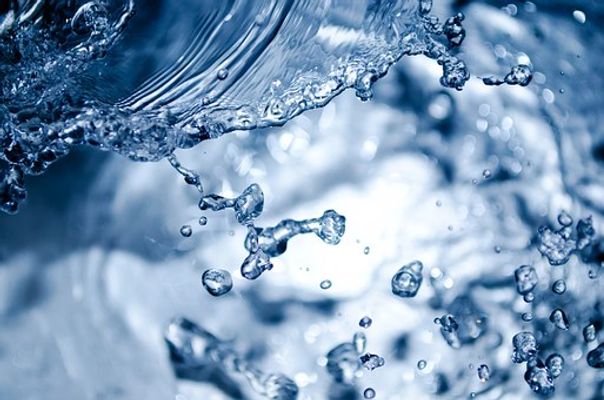7.1.5
Phloem
Structure
Structure
The phloem are plant vessels that are responsible for transporting sugars. The structure of the phloem is specialised for this role.


Sieve tube elements
Sieve tube elements
- Sieve tube elements are the cells that make up the phloem vessel.
- The vessel consists of many sieve tube elements that run up the stem on top of one another.
- Sieve tube elements are living cells that contain a cytoplasm but no nucleus.
- The walls of sieve tube elements are made of cellulose.


Companion cells
Companion cells
- Companion cells are connected to sieve tube elements via plasmodesmata.
- Plasmodesmata allows the cytoplasm to be shared between companion cells and sieve tube elements.
- Companion cells have a nucleus.


Sieve plates
Sieve plates
- At either end of the sieve tube elements are sieve plates.
- Sieve plates have large pores that allow sap to move through the sieve tube elements.
- Sieve plates allow sugars to be transported through the phloem.
Translocation
Translocation
Translocation is the process where sugars produced in photosynthesis are transported from the leaves to other parts of a plant. The steps involved are:


1) Active transport of sucrose
1) Active transport of sucrose
- Sucrose is produced during photosynthesis in the leaves.
- The leaves are called the source.
- Sucrose is actively transported into the companion cells in the phloem.
- Energy is provided for active transport from mitochondria in the companion cells.


2) Diffusion of sucrose
2) Diffusion of sucrose
- The loading of sucrose into the phloem causes the concentration of sucrose to increase.
- Sucrose diffuses from the companion cells into the sieve tube elements.


3) Osmosis
3) Osmosis
- The increase in the concentration of sucrose in the phloem causes water potential in the phloem to decrease.
- There is a water potential gradient between the outside of the phloem and the inside.
- Water diffuses into the phloem by osmosis.


4) Unloading of sucrose
4) Unloading of sucrose
- At the bottom of the phloem, sucrose concentration is low because it is being used up in the cells.
- The cells at the bottom of the phloem are called the sink.
- Sucrose diffuses out of the phloem and into the sink cells.
- This lowers the water potential of the sink cells.


5) Osmosis
5) Osmosis
- Water diffuses down its water potential gradient out of the phloem by osmosis.
- The diffusion of water into the phloem at the source and out of the phloem at the sink creates a hydrostatic pressure gradient.
- The hydrostatic pressure gradient allows mass transport of sucrose from source to sink.
- This is called mass flow.
1Cell Structure
1.1Cell Structure
1.1.1Studying Cells - Microscopes
1.1.2Introduction to Eukaryotic & Prokaryotic Cells
1.1.3Ultrastructure of Eukaryotic Cells
1.1.4Ultrastructure of Eukaryotic Cells 2
1.1.5Ultrastructure of Eukaryotic Cells 3
1.1.6Prokaryotic Cells
1.1.7Viruses
1.1.8End of Topic Test - Cell Structure
1.1.9Exam-Style Question - Microscopes
1.1.10A-A* (AO2/3) - Cell Structure
2Biological Molecules
2.1Testing for Biological Modules
2.2Carbohydrates & Lipids
2.3Proteins
3Enzymes
4Cell Membranes & Transport
4.1Biological Membranes
5The Mitotic Cell Cycle
6Nucleic Acids & Protein Synthesis
6.1Nucleic Acids
7Transport in Plants
8Transport in Mammals
8.1Circulatory System
8.2Transport of Oxygen & Carbon Dioxide
9Gas Exchange
9.1Gas Exchange System
10Infectious Diseases
10.1Infectious Diseases
10.2Antibiotics
11Immunity
12Energy & Respiration (A2 Only)
13Photosynthesis (A2 Only)
14Homeostasis (A2 Only)
14.1Homeostasis
14.2The Kidney
14.3Cell Signalling
14.4Blood Glucose Concentration
14.5Homeostasis in Plants
15Control & Coordination (A2 Only)
15.1Control & Coordination in Mammals
15.1.1Neurones
15.1.2Receptors
15.1.3Taste
15.1.4Reflexes
15.1.5Action Potentials
15.1.6Saltatory Conduction
15.1.7Synapses
15.1.8Cholinergic Synnapses
15.1.9Neuromuscular Junction
15.1.10Skeletal Muscle
15.1.11Sliding Filament Theory Contraction
15.1.12Sliding Filament Theory Contraction 2
15.1.13Menstruation
15.1.14Contraceptive Pill
15.2Control & Co-Ordination in Plants
16Inherited Change (A2 Only)
16.1Passage of Information to Offspring
16.2Genes & Phenotype
17Selection & Evolution (A2 Only)
17.2Natural & Artificial Selection
18Classification & Conservation (A2 Only)
18.1Biodiversity
18.2Classification
19Genetic Technology (A2 Only)
19.1Manipulating Genomes
19.2Genetic Technology Applied to Medicine
19.3Genetically Modified Organisms in Agriculture
Jump to other topics
1Cell Structure
1.1Cell Structure
1.1.1Studying Cells - Microscopes
1.1.2Introduction to Eukaryotic & Prokaryotic Cells
1.1.3Ultrastructure of Eukaryotic Cells
1.1.4Ultrastructure of Eukaryotic Cells 2
1.1.5Ultrastructure of Eukaryotic Cells 3
1.1.6Prokaryotic Cells
1.1.7Viruses
1.1.8End of Topic Test - Cell Structure
1.1.9Exam-Style Question - Microscopes
1.1.10A-A* (AO2/3) - Cell Structure
2Biological Molecules
2.1Testing for Biological Modules
2.2Carbohydrates & Lipids
2.3Proteins
3Enzymes
4Cell Membranes & Transport
4.1Biological Membranes
5The Mitotic Cell Cycle
6Nucleic Acids & Protein Synthesis
6.1Nucleic Acids
7Transport in Plants
8Transport in Mammals
8.1Circulatory System
8.2Transport of Oxygen & Carbon Dioxide
9Gas Exchange
9.1Gas Exchange System
10Infectious Diseases
10.1Infectious Diseases
10.2Antibiotics
11Immunity
12Energy & Respiration (A2 Only)
13Photosynthesis (A2 Only)
14Homeostasis (A2 Only)
14.1Homeostasis
14.2The Kidney
14.3Cell Signalling
14.4Blood Glucose Concentration
14.5Homeostasis in Plants
15Control & Coordination (A2 Only)
15.1Control & Coordination in Mammals
15.1.1Neurones
15.1.2Receptors
15.1.3Taste
15.1.4Reflexes
15.1.5Action Potentials
15.1.6Saltatory Conduction
15.1.7Synapses
15.1.8Cholinergic Synnapses
15.1.9Neuromuscular Junction
15.1.10Skeletal Muscle
15.1.11Sliding Filament Theory Contraction
15.1.12Sliding Filament Theory Contraction 2
15.1.13Menstruation
15.1.14Contraceptive Pill
15.2Control & Co-Ordination in Plants
16Inherited Change (A2 Only)
16.1Passage of Information to Offspring
16.2Genes & Phenotype
17Selection & Evolution (A2 Only)
17.2Natural & Artificial Selection
18Classification & Conservation (A2 Only)
18.1Biodiversity
18.2Classification
19Genetic Technology (A2 Only)
19.1Manipulating Genomes
19.2Genetic Technology Applied to Medicine
19.3Genetically Modified Organisms in Agriculture
Unlock your full potential with Seneca Premium
Unlimited access to 10,000+ open-ended exam questions
Mini-mock exams based on your study history
Unlock 800+ premium courses & e-books